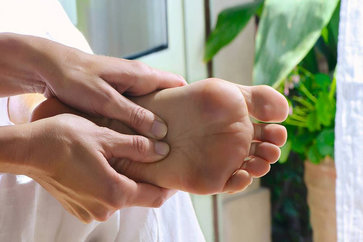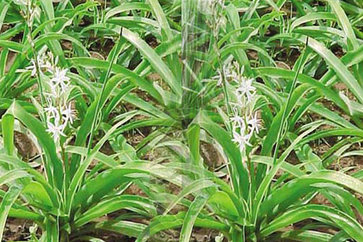Shodhana: 5 Key Benefits as Revealed by Acharya Vagbhata
Shodhana, in Ayurveda, refers to the process of cleansing the body of impurities, including morbid doshas (imbalanced energies) and malas (waste products), such as excreta and other unwanted substances that accumulate over time. When these doshas and waste products linger in the body, they can block channels (sroto avarodha), weaken digestive fire (agni), disrupt tissue balance (dhatus), and lead to toxicity.
This imbalance impairs strength, endurance, and health, making the body more prone to disease. Regular cleansing helps maintain a clear, healthy system. A well-cleansed body signifies comprehensive health and is essential for preventing the recurrence of diseases, a practice known as “apunarbhava chikitsa.”
Ayurveda emphasizes Shodhana as a crucial treatment for conditions requiring purification. It’s believed that cleansing removes doshas and diseases, promoting long-term immunity, resilience, and improving overall life quality, contributing to longevity. Acharya Vagbhata outlines five key advantages of Shodhana in the Ashtanga Hridaya, highlighting its holistic health benefits.
Benefits of Shodhana Therapies According to Acharya Vagbhata
Shodhana therapies, as described by Acharya Vagbhata, offer profound benefits by purifying the body and restoring balance to its systems. These purification methods are essential for maintaining optimal health and preventing disease.
The following are the five primary benefits of Shodhana therapies, each contributing to the overall well-being of the individual by addressing both physical and mental health:
1. Buddhi Prasadam – Enhances Clarity and Calmness of the Intellect
Shodhana therapies have a profound impact on the enhancement of mental functions such as thought processing, decision-making, memory, and overall cognitive abilities.
In Ayurveda, Buddhi (intellect) is considered the mediator of information, processing everything that we perceive through our senses. A well-balanced and healthy intellect is essential for managing our thoughts, actions, and decisions.
- Location of Buddhi: The intellect resides in the Hridaya (heart or brain), which is the seat of mental functions. When this area is disrupted by imbalanced doshas, it can lead to cognitive disturbances and mental disorders.
- Role of Shodhana: Shodhana helps cleanse the body by expelling harmful doshas from the Hridaya, restoring balance and promoting the optimal functioning of the intellect. By clearing these imbalances, it supports mental clarity, focus, and decision-making.
Key Benefits:
- Enhanced Mental Functions: Regular Shodhana enhances the clarity of thought, improves decision-making, strengthens memory, and supports overall intellectual health.
- Balanced Intellect: The purification process ensures that the intellect remains balanced, allowing it to function properly and support healthy cognitive and mental activities.
- Restoration of Balance: By removing the harmful doshas from the body, Shodhana restores the equilibrium of the nervous and endocrine systems, fostering mental rejuvenation and calmness.
- Holistic Benefits: These improvements in mental health and clarity benefit overall well-being, promoting sharper intellect and emotional stability.
Shodhana therapy helps rejuvenate the intellect, ensuring it operates in its optimal state. By cleansing the body and mind of toxic imbalances, it contributes to better mental health, sharper cognitive abilities, and a clearer, more calm mindset.
2. Balam Indriyanam – Strengthens the Sense Organs
The Indriyas (organs) in Ayurveda are categorized into jnanendriyas (sense organs), karmendriyas (organs of action), and ubhayendriya (the mind, which serves as a dual organ).
These organs are integral to the functioning of the body, and they constantly undergo wear and tear throughout daily activities. Without adequate rest and rejuvenation, they begin to weaken and lose their efficiency, leading to compromised bodily functions.
- Sense Organs (Jnanendriyas): Essential for perceiving and processing information, the health of the sense organs directly affects how we interact with the world around us.
- Organs of Action (Karmendriyas): These include the organs responsible for movement, speech, reproduction, and elimination. Their proper functioning is crucial for everyday tasks.
- The Mind (Ubhayendriya): As the central command, the mind plays a vital role in managing activities, making decisions, and overseeing the coordination of physical actions.
Key Benefits:
- Impact of Imbalance: Prolonged use without proper care can weaken the indriyas, resulting in poor coordination between the sense organs and their respective objects (Asatmya Indriyartha Sannikarsha), leading to various diseases.
- Role of Shodhana: Shodhana therapies work by cleansing the body of imbalanced doshas. This purification process strengthens the sense organs, ensuring they function optimally and harmoniously.
- Restoring Power: By eliminating accumulated toxins and imbalances, Shodhana restores the strength of the sense organs, enabling enhanced perception, action, and mental functions.
- Systemic Benefits: These improvements positively affect both the sensory and motor systems, as well as mental health, leading to a balanced and well-functioning body.
Shodhana helps to rejuvenate and strengthen the sense organs, organs of action, and the mind. Through its cleansing effects, Shodhana supports the body’s ability to process and interact with the world around it, ensuring efficient physical and mental functions.
3. Dhatu Sthiratvam – Provides Support and Stability to the Tissues
In Ayurveda, Dosha Dushya Sammurchana describes the harmful interaction between weak and susceptible tissues (dhatus) and strong, morbid doshas. This imbalance is a crucial factor in the development of diseases, where doshas invade and destabilize the tissues, compromising the body’s overall health.
The primary goal of treatment is to break this harmful connection between the doshas and the tissues, thereby reversing the process of disease. Shodhana plays a pivotal role in this process by expelling the morbid doshas after they have been isolated from the tissues, helping restore balance to the body. This purification process serves as the first step in the recovery of tissues.
Key Benefits:
- Dosha Dushya Sammurchana: The interaction between imbalanced doshas and weakened tissues is a core cause of disease. Shodhana targets this harmful amalgamation to restore health.
- Role of Shodhana: Shodhana therapies help to expel the morbid doshas from the body, isolating them from the tissues. This cleansing process supports the restoration of tissue integrity and health.
- Post-Shodhana Support: Once the doshas are expelled, supporting therapies such as a balanced diet, herbal medicines, and Rasayana therapies are introduced to further stabilize and strengthen the tissues.
- Systemic Benefits: Shodhana helps in stabilizing the body’s tissues, which impacts various systems, including the circulatory, musculoskeletal, reticuloendothelial, adipose, and reproductive systems, promoting overall stability and health.
Shodhana plays a critical role in strengthening and stabilizing the tissues, ensuring the body’s systems function optimally. Through proper purification and subsequent therapies, tissues regain their vitality, contributing to comprehensive health and longevity.
4. Jwalanasya Diptim – Enhances Digestive Fire and Capacity of the Stomach/Gut
The foundation of many diseases lies in disturbances to the core digestive fire, known as Jathara Agni or Kayagni, which is located in the stomach and gut. When this digestive fire is strong and balanced, it efficiently digests food and provides essential nutrition to the body.
However, when this agni weakens or becomes disturbed, it can lead to various systemic and metabolic disorders. Imbalance in the core digestive fire also disrupts Dhatu Agni (tissue fire) and Bhuta Agni (elemental fire), leading to further complications throughout the body.
Key Benefits:
- Core Digestive Fire (Jathara Agni): When the digestive fire is functioning optimally, it breaks down food effectively, ensuring proper nutrient absorption and distribution throughout the body. This is essential for maintaining overall health.
- Impact of Weak Digestive Fire: When the digestive fire becomes weak or unbalanced, it impairs digestion, leading to the buildup of toxins (ama) and waste (mala) in the body. This can cause numerous health issues, including poor metabolism, weakened immunity, and sluggish digestion.
- Role of Shodhana: Shodhana helps to eliminate the accumulated toxins and waste, clearing blockages in the digestive system. By doing so, it rejuvenates the digestive fire, restoring its optimal function and improving digestion and metabolism.
- Restoring Balance to All Agnis: When Jathara Agni is restored to balance, it positively impacts Dhatu Agni (the fire that governs tissues) and Bhuta Agni (the fire that governs the elements within the body), creating overall harmony and wellness.
- Improved Gastrointestinal Health: Regular Shodhana therapies cleanse the body of toxins and promote healthy digestion, leading to better metabolic function, improved nutrient absorption, and a stronger immune system.
Shodhana’s influence on the gastrointestinal system emphasizes its importance in supporting the digestive process, promoting overall well-being by enhancing digestion, metabolism, and restoring balance to all internal systems.
5. Chirat Pakam Vayasah – Slows Down the Ageing Process and Acts as an Anti-Ageing Intervention
Shodhana therapies are a powerful tool for rejuvenating the body, as they help eliminate morbid doshas and malas (toxins and waste). This cleansing process plays a significant role in slowing down the ageing process, making it a natural anti-ageing therapy. The overall anti-ageing benefit is a cumulative effect of the four previously discussed benefits, which together enhance the body’s vitality and well-being.
Key Benefits:
- Rejuvenation of Tissues: Shodhana promotes the renewal and regeneration of tissues by removing accumulated toxins, allowing the body to repair and restore itself.
- Prevention of Premature Ageing: When doshas build up in the body, they disrupt vital functions and compromise immunity. This results in premature signs of ageing, such as fatigue, dull skin, and overall lack of energy. Shodhana flushes out these harmful substances, helping to maintain a youthful appearance and vitality.
- Increased Energy and Vitality: By cleansing the body, Shodhana supports proper nutrition and oxygenation of tissues, which in turn improves energy levels and stamina, making individuals feel more vibrant and healthier.
- Holistic Rebalancing: Regular Shodhana helps restore balance to the doshas, dhatus (tissues), agni (digestive fire), malas (waste), indriyas (senses), and manas (mind), ensuring overall health is maintained and preventing imbalances that can accelerate the ageing process.
- Supports Immunity and Longevity: The cleansing process strengthens the immune system, reducing the chances of illness and promoting a longer, healthier life. A body that is clear of toxins has enhanced resilience and better resistance to disease.
Shodhana, when practiced regularly, helps preserve a youthful appearance by balancing all the internal systems of the body. It not only promotes longevity but also ensures overall wellness, making it a vital part of maintaining comprehensive health.
Acharya Vagbhata emphasizes that the benefits of Shodhana can only be achieved if the therapies are performed correctly and diligently, highlighting the importance of proper execution for optimal health and well-being. Without careful application, the transformative effects of the purification process may not be fully realized.

























